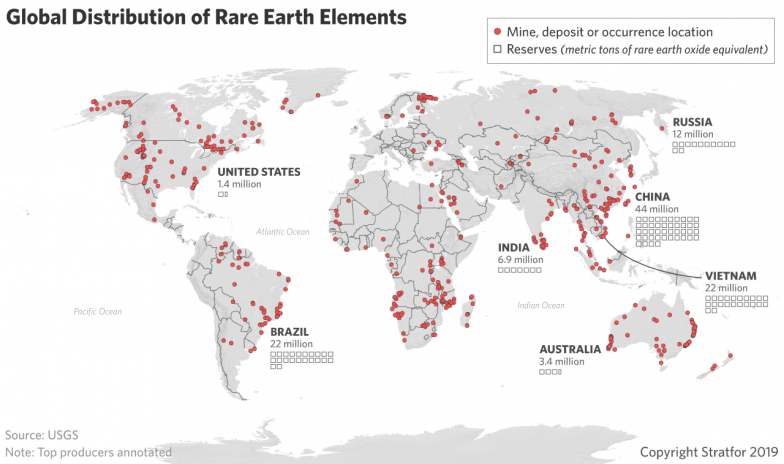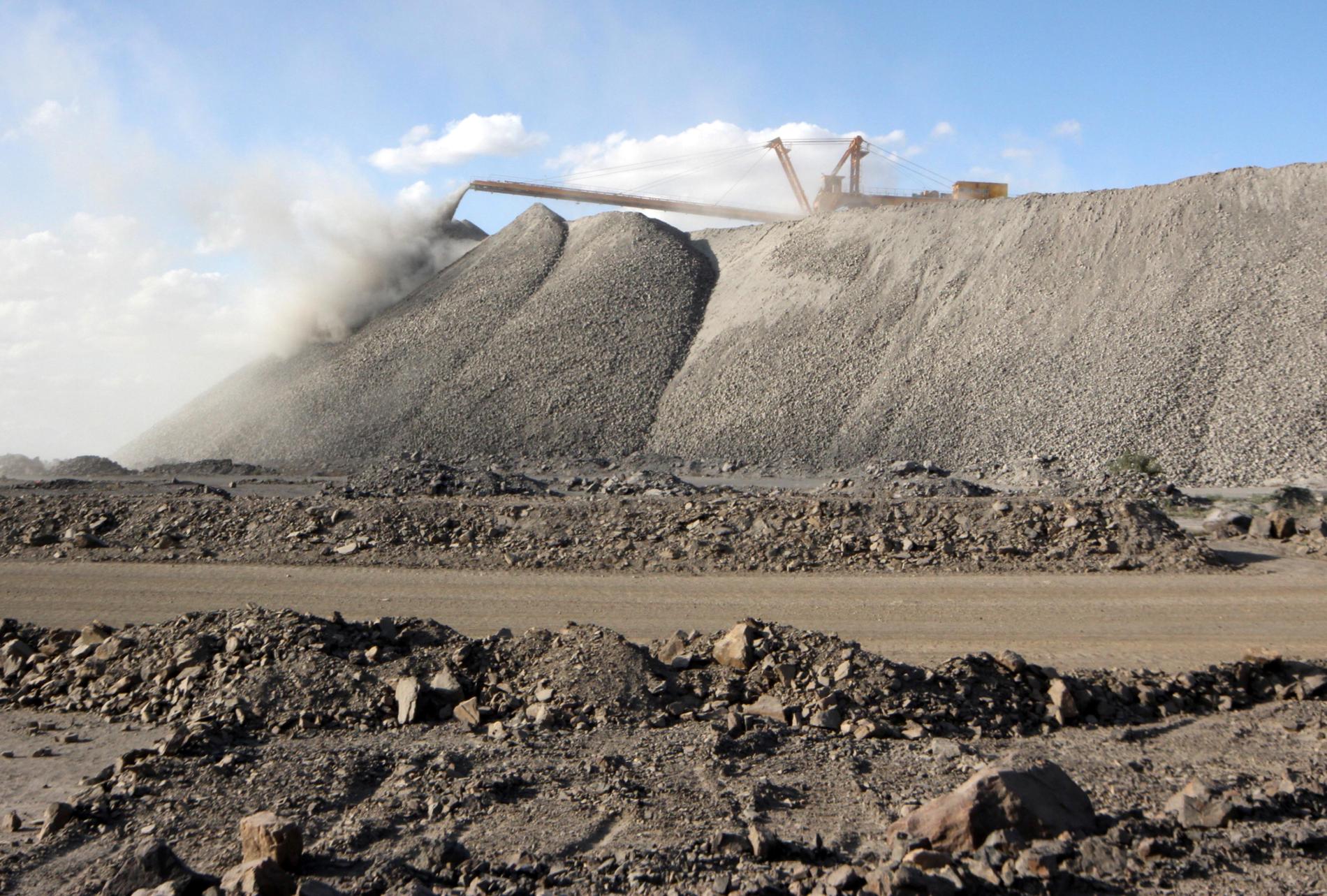A-level Geography

(Picture from RANE [2]Link opens in a new window)
During the first decade of the 2000s the Chinese government began to rethink its rare earth production practices. The government sought to develop companies that could manufacture rare earth magnets and advanced electronic components in China. Beginning in 2005 the export quotas authorized by the Chinese Ministry of Trade began to decrease, limiting how much rare earth oxide could be exported to foreign manufacturers. Rare earth producers that did not comply with new environmental regulations were denied shares of the quotas. In the summer of 2010 the export quotas for the second half of the year were cut in half [1]Link opens in a new window.
The reduced export quotas worried high-tech manufacturers outside of China. This worry turned into panic a few months later, when a scheduled shipment of rare earth oxides from China failed to arrive in Japan. Tensions between the countries were running high after a drunken Chinese fishing-boat captain had been arrested for trying to ram a Japanese coast guard ship in disputed waters. People quickly speculated that the Chinese government was manipulating rare earth exports to influence international politics. The price of the rare earth elements spiked, increasing by thousands of percentage points in a few weeks [1]Link opens in a new window .
The high prices created by the so-called “rare earths crisis” during 2011 and 2012 prompted many companies around the world to consider producing rare earth metals. Molycorp reopened the Mountain Pass Mine and installed a $500 million separation plant designed to meet U.S. environmental standards. Lynas, which operated a separation plant in Malaysia, used a $250 million investment backed by the Japanese government to develop the Mount Weld mine in Western Australia. The Brazilian Metallurgy and Mining Company (CBMM) put into operation a process to extract rare earths from the accumulated waste of its niobium mine. Many of these operations promised to use innovative new separation processes that were less environmentally harmful (though more expensive) than the solvent extraction process that had been significantly advanced in China during the 1970s [1]Link opens in a new window .
The bubble in rare earth prices soon burst, however, and dreams of establishing rare earth production around the world collapsed with it. In 2014 the World Trade Organization ruled that China’s export quotas were an illegitimate restraint on free trade. Abolishing the export quotas has increased the global trade of rare earths, but it has also eliminated an important tool in the Chinese government’s efforts to reduce domestic pollution. Black-market (illegal) production of rare earths remains a significant problem because unlicensed producers do not take steps to control waste or pay taxes that fund environmental monitoring and government health programs. Although international production has increased slightly since 2010, about 80% of world production still took place in China in 2018 [1]Link opens in a new window.
Rare Earth Elements Education Resources for Geography
Stockholm Environment Institute (SEI)- ‘The geopolitics of Chinaʹs rare earths: a glimpse of things to come in a resource-scarce world?’
MIT Podcast- ‘Rare Earths for the Common People’
Environmental Justice Atlas- ‘Rare Earth Mining of Chalco, Yulin, Guangxi, China’
Huber and Steininger (2022)- ‘Critical sustainability issues in the production of wind and solar electricity generation as well as storage facilities and possible solutions’
Sustainalytics- ‘Implications of the use of rare-earth elements in the wind energy market’
International Institute for Sustainable Development (IISD)- ‘Green Conflict Minerals: The fuels of conflict in the transition to a low-carbon economy’
Science History Institute- ‘Rare Earth Elements: The Intersection of Science and Society’
Action Aid and Somo- ‘Human Rights in Wind Turbine Supply Chains’
NPR- ‘The Strategic Value Of Rare Earths’

(A Chinese rare earths giant is building international alliances worldwide [3]Link opens in a new window)
Here, we summuarized education resources for teaching Rare Earth Elements in the Geography course in the following examboards:
Assessment and Qualifcations Alliance (AQA)
Geography
3.2 Human geography
3.2.1 Global systems and global governance
3.2.5 Resource Security
EDEXCEL
Geography (2016)
Topic 5 The Water cycle and water insecurity
Topic 6: The carbon cycle and energy security
Topic 7: Superpowers (geopolitical powers)
Topic 8 Health, Human rights, and intervention
Oxford, Cambridge and RSA Examinations (OCR)
Geography
Topic 3.1 – Climate Change
4. In what ways can humans respond to climate change?
International Baccalaureate (IB)
Geography
Topic:
Geographic perspectives—global change
Global resource consumption and security
For Further Curriculum information, please visit the following examboard website.
Assessment and Qualifcations Alliance (AQA)
https://www.aqa.org.uk/
EDEXCEL
https://qualifications.pearson.com/en/home.html
Oxford, Cambridge and RSA Examinations (OCR)
https://ocr.org.uk/
International Baccalaureate (IB)
https://www.ibo.org/
